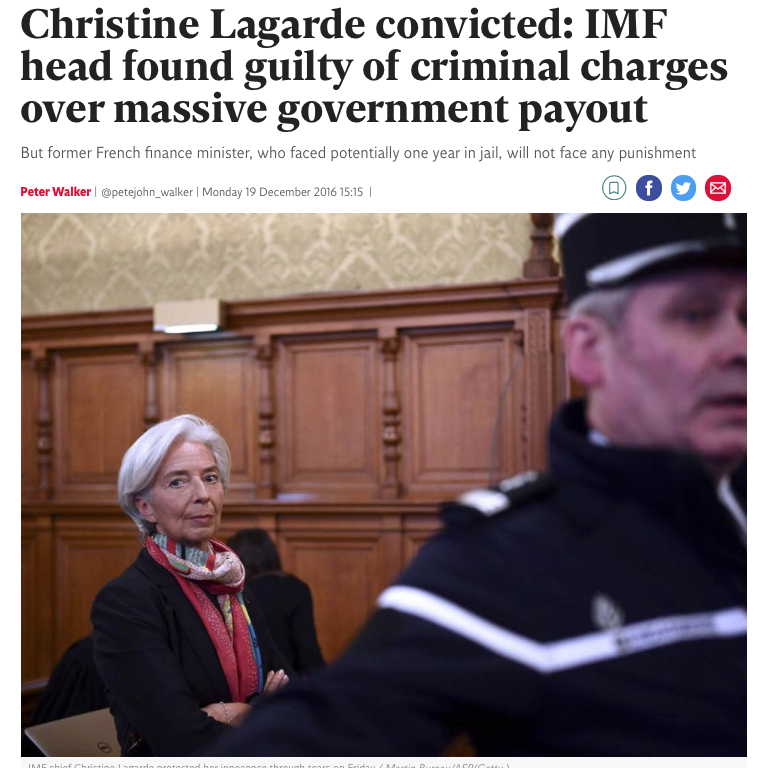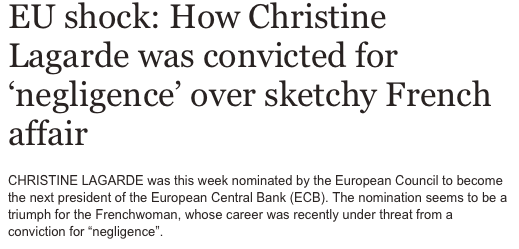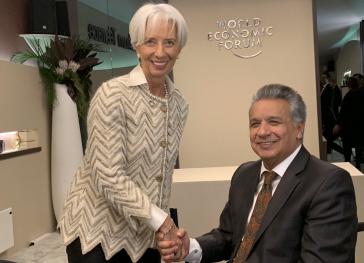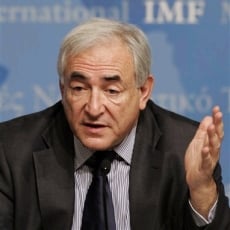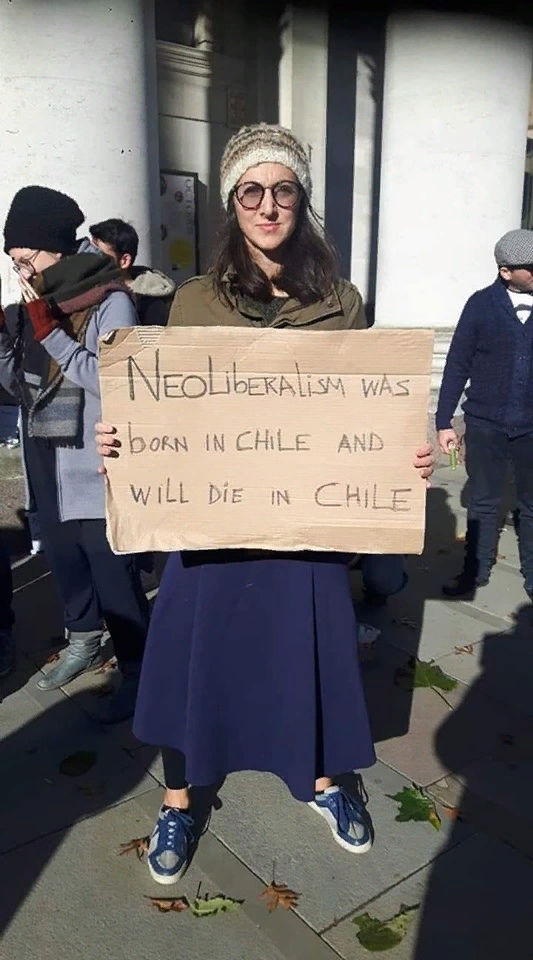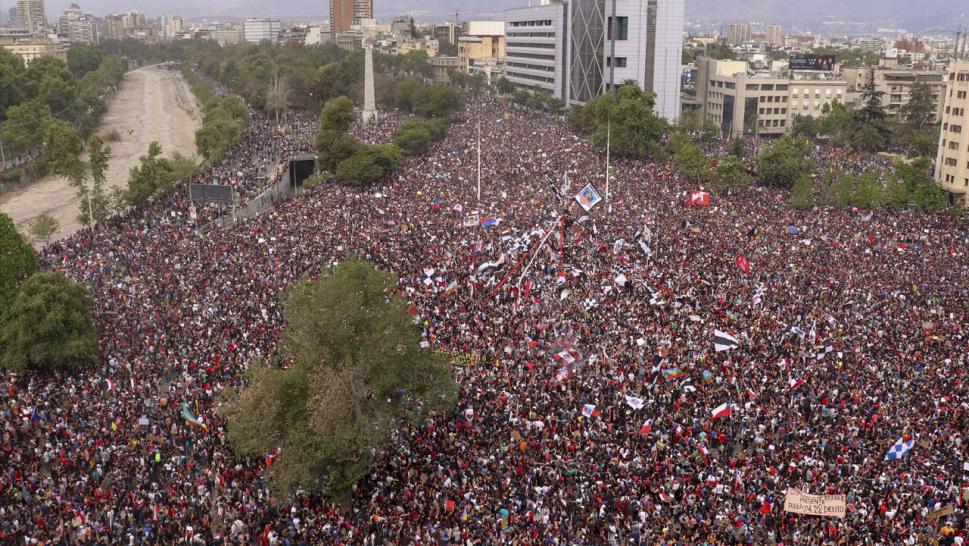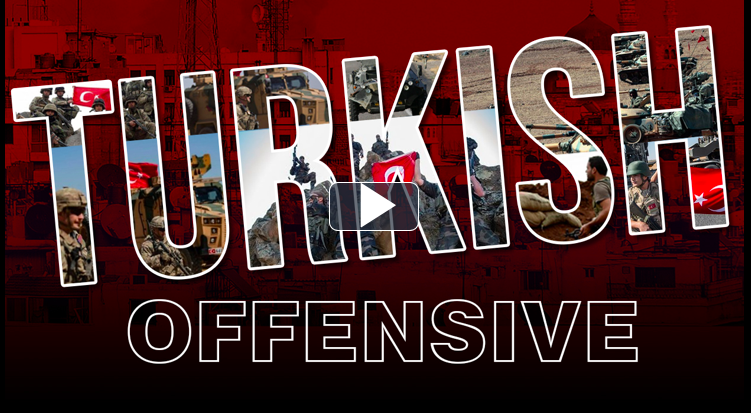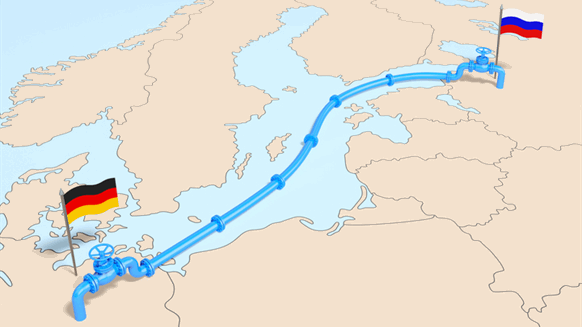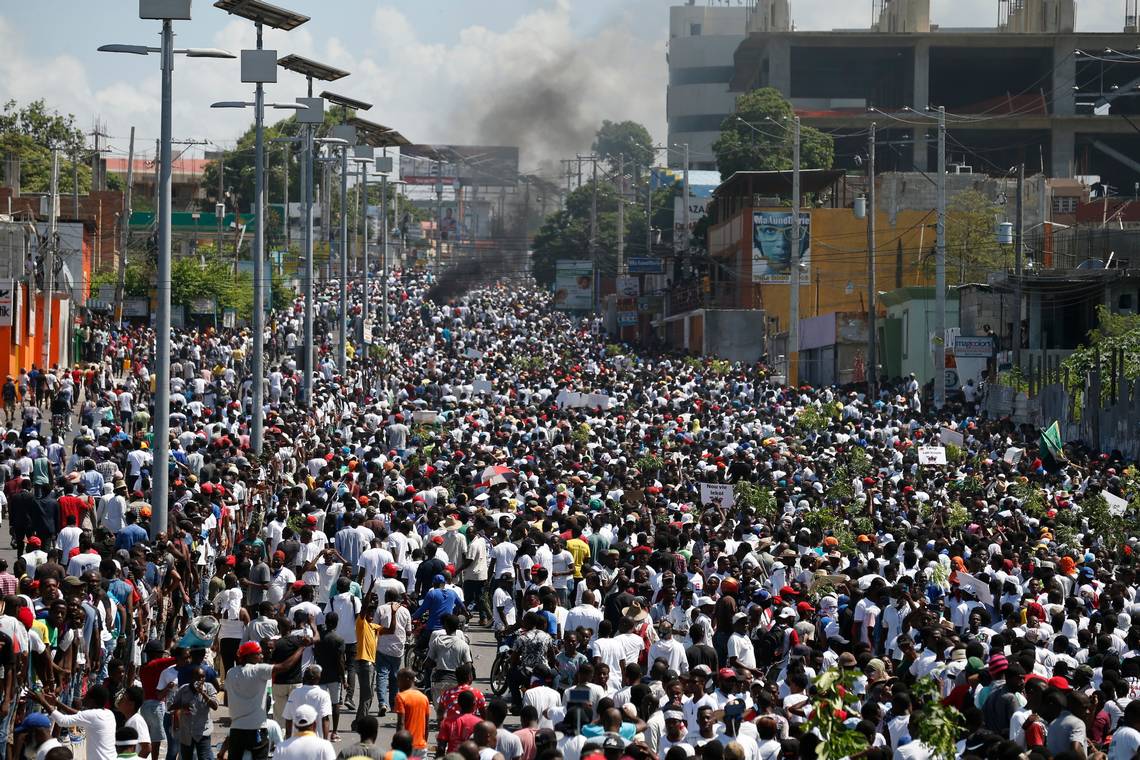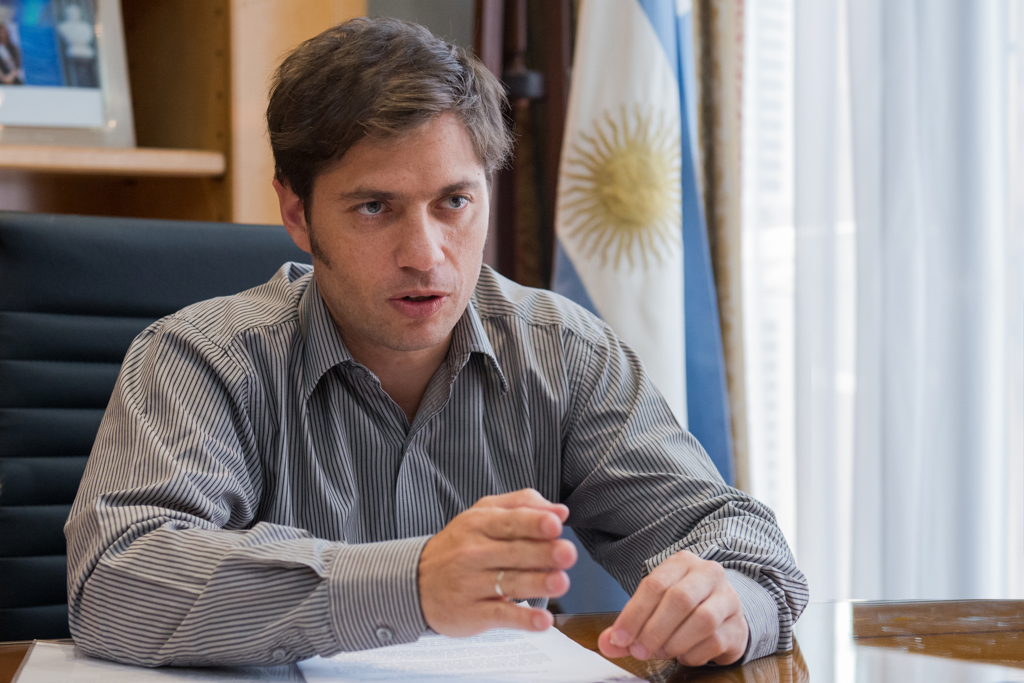Part 1 : Another look at the Federal Reserve’s panic in September 2019
You may recall that from 17 September 2019, the United States Federal Reserve injected massive amounts of liquidity into banks due to a quite abnormal situation on the repo market [1]. The repo market designates a mechanism used by banks to obtain short-term financing. They sell securities they hold in repurchase agreements (repo). For example they place US Treasury bonds or Triple-A company securities in repo overnight, to serve as warranty or collateral for the loan they are making, and they buy them back on the following day. In exchange for these securities, they obtain cash at a rate of interest close or equal to the policy interest rate fixed by the Fed which is close to 2% (see the video on the financial channel CNBC).
Who provides the cash for this short-term lending? The lenders are their counterparts on the interbank market [2] or other financial institutions such as Money Market Funds. [3]
From 16 September, there has been a crisis situation: banks financing themselves on the repo market found themselves facing abnormally high interest rates, the interbank market had almost dried up, a situation called credit crunch, in other words banks were not ready to lend one another cash even overnight. Other lenders such as Money Market Funds took advantage of the situation to demand very high returns. While the normal rate was 2%, lenders were demanding up to 10%.
So the big banks knocked at the Fed’s door, asking it to substitute as a lender at rates they would consider normal, that is, about 2%. The Fed hesitated for a moment before massively intervening, in a highly uncertain climate bordering on panic, [4] by injecting over 50 billion dollars of liquidity on 17 September 2019. [5] Thus the Fed acted as a substitute for the markets.
It is striking to note how, among finance commentators of both private and public media, none have pointed out that the markets, which are supposed to be self-regulating, do not actually function as they should. Indeed, the mainstream media, with their strong links to the world of banking and large investment funds, have remained silent about the fact that once again, the public authorities are forced to come to the rescue of big banks and help the market to keep going. After having injected, on 17 September, 53 billion dollars into the banks, substituting for the interbank market and other private lenders, the Fed has made fresh injections of liquidity every day, bringing the amount from the second day on to a daily maximum of 75 billion dollars, then up again to a maximum of 100 billion dollars. On the date of writing, the Fed continues its daily interventions and has announced that it will continue to do so until 4 November at the earliest. (See the televised interview by the Bloomberg agency).
In short, the crisis is still with us. The markets concerned have not returned to ‘normal’. The explanations put forward to justify the Fed’s interventions as ‘one-offs’ – such as a tax bill to be paid by banks at this time of year or the fluctuating price of petroleum due to the closure of two Saudi refineries– cannot explain a situation that has lasted for more than three weeks. Further on we will see that the other explanation produced, namely that liquidity regulations are far too restrictive, is no more convincing but directly serves the interests of the big private banks.
A Paradoxical Situation
As I have repeatedly explained, banks are not short of liquidity… In fact, the Fed has been injecting massive amounts of liquidity into the US banking system since 2008.
The problem then is not a structural lack of liquidity but the use banks make of the liquidity available to them. To put it simply, they use the liquidity placed at their disposal to buy up massive amounts of debt. They buy public bonds guaranteed by States, and especially, in the case of US banks, US Treasury bonds. They also buy massive amounts of bonds issued by major private companies (banks, industrial companies, the information technology and commercial sectors, the extractive sector – mining, oil, and so on). There are two main categories of bonds: low-risk securities issued by Triple-A corporations like Apple on the one hand, which have a relatively low yield, and on the other, junk bonds. These are bonds issued by companies with a bad reputation, that is, a low credit rating (BBB, CCC, and worse). Junk bonds give high yields but are high risk. Banks also buy structured products which may be highly toxic.
The banks’ behaviour is a response to the capitalist logic of making maximum profits in minimum time. Consequently, their managers try to keep as little cash as possible in their coffers as this is money that is ‘sitting idle’ in the bank (just an image) and not yielding any profit. When this happens, banks will buy as many bonds as possible. This is what they see as the best short-term investment. They buy safe bonds (mainly US Treasury bonds) that they can use as collateral to conduct a repo or similar operation in order to get cash to buy junk bonds or other financial products (structured products, derivatives, swaps, and so on) which may produce a high yield.
While the Fed maintains a high level of injection of liquidity on the bank market (by buying from banks the bonds that they bought from the US Treasury or private companies), banks use the liquidity to buy securities of various kinds or in some cases, shares. In short, the money goes round and round in a truly vicious circle. This produces one speculative bubble on the bond market, another on the stock market and a third on the property market. Banks are not investing in the real economy; they lend very little to small and medium-sized companies for investment in production. This action on the part of private banks, supported and actively encouraged by the policies of the Fed (the same happens in Europe with the policies of the ECBand the Bank of England, in Japan with the policies of the Bank of Japan –BoJ, in China with the policies of the China Central Bank) leads to what was first named by the economist J. M. Keynes ‘the liquidity trap’ (see my article).
Does the Fed not see the signals sent by the markets?
Some claim that the Fed does not see the signals coming from the markets. First of all, I consider it dangerous to adopt such a magical sounding concept, one which seems to support the myth that blind market forces make for a successful economy. (See Box: The religion of markets).
The reality, I believe, is more complex. The Fed is perfectly aware that the banks are in a bad way and it is not entirely true that it does not see the signs sent from the markets. On the contrary, what is reprehensible is the way it defers to the markets’ requirements. There have to be radical changes in the policies, missions and the very structure of the central bank.
The Fed knows perfectly well that the wealth of the directors and share-holders of the big private banks has increased while day after day they implement and expand unacceptable procedures; procedures which will soon lead to another brutal crisis. The Fed also knows that the US economy is in a bad way despite Trump’s self-congratulatory discourse and despite a historically low unemployment rate. The low unemployment rate is deceptive and induces a false sense of security as employers, supported by successive governments, have forced workers to accept ever more precarious contracts and ever lower wages. Not only that, but millions of unemployed have given up trying to get unemployment benefit and thus disappeared from unemployment figures. The Fed knows only too well that the allegedly healthy US economy is bolstered up by a mountain of private and public borrowing mainly used for speculation which sooner or later will lead to a major new crisis. Add to this that the growth of production in the United States’ industrial sector has fallen sharply in 2019 and could stagnate, or even shrink, in 2020 (see this). Exports of manufactured goods are falling.
The Fed knows that if it were to raise interest rates and to cease constantly injecting liquidity, certain big companies (including banks) would fail. The Fed knows that if, in the interests of preventing a banking crisis, it were to demand that banks increase the amount of equity and liquidity that they must hold, there would be an outcry. They would make a huge fuss and ask Trump to intervene. So the Fed, meekly albeit reluctantly, complies with the demands of the markets. At present, the markets’ demands are quite clearly those of about fifteen big private US banks (four of which collectively hold $377 billion of cash reserves— they are JP Morgan Chase, Bank of America, Citigroup and Wells Fargo) and by big investment funds such as BlackRock.
One thing is sure: the current situation of the private financial sector in the US (and elsewhere in the world) is definitely a source of deep concern, otherwise there is no reason for the Fed to have constantly been injecting liquidities since 17 September. [6]
Still, if we want to fight them effectively, we have to understand the expectations and motivations of banks and their allies.
I am convinced that since mid-September 2019 major banks have been trying to use the situation in the US to put pressure on the supervisory authority and on the Fed to lower the ratio of liquidity that is demanded to face most real systemic hazards. Indeed since the 2008 crisis, the supervisory authorities have demanded that systemic banks keep more liquidity compared with what was the case before 2008, to be able to deal with an accident.
Taking advantage of the support of the Trump administration, and making the most of the laxity of the Fed and the supervisory authorities, they are trying to get a lower liquidity ratio. They thus hope to be able to use their liquidity quite legally to buy and speculate on risky financial securities. As a result, the drying up of the interbank market is partly caused and/or maintained by this strategy. As they pursue this objective, they are campaigning in the media to have the public believe that it is this liquidity requirement (to deal with a possible accident of the kind that occurred in September 2008) that makes it hard to find liquidity on the interbank market. They are therefore lobbying the Fed and the supervisory authority to get the surplus liquidity requirement removed.
They managed to get the Trump administration to have the Volcker Rule abrogated from January 2020 onward.
The Volcker Rule is a federal regulation that generally prohibits banks from conducting certain investment activities with their own accounts and limits their dealings with hedge funds and private equity funds, also called covered funds.
The Volcker Rule was introduced in 2013 under Barack Obama’s presidency, in the context of the Dodd-Franck Act, that had been passed in the wake of the 2007-2008 financial crisis. It prohibits banks from speculating with deposit money. A former director of the Federal Reserve, Paul Volcker did not only warn against the versatility of financial markets, he also considered that trading activities distracted banks from their core business, namely financing the economy.
The banks want to go further and question the Liquidity Coverage Ratio [7] (LCR) that was adopted in the US and the rest of the world after the 2008 crisis. The LCR is the requirement whereby banks must hold an amount of high-quality liquid assets sufficient to fund cash outflows for 30 days. Liquidity ratios are similar to the LCR in that they measure a company’s ability to meet its short-term financial obligations.
They also question the percentage of intraday liquidity, which is added to the Liquidity Coverage Ratio. Early every morning around 7 am, banks go to the repo market to make up the liquidity they need to meet their legal obligations. The big banks’ lobby claims that the amount required is too high and that this accounted for the crisis of 17 September 2019. The Financial Times devoted an article to the topic under the suggestive title ‘Fed analyses regulation’s role in sudden rates rise’, published on 2 October in the paper edition, while it had been published on line on the 1st under the title: ‘Fed wrestles with role of regulation in repo squeeze’. The article cautiously sanctions the US banking lobby’s argument. The European banking lobby expressed the same view concerning the implementation of a liquidity ratio on the old continent and in the UK. A forthcoming article will be devoted to the situation in Europe, and more specifically in connection with the ECB’s intervention under Mario Draghi (2011-2019).
Clearly it cannot be the banks’ obligation to hold enough liquidity to face a possible crisis that led to the shortage of liquidity on the US repo market. The real cause was the banks’ decision to use a maximum of their liquidities to speculate so as to maximize profits for their shareholders and executive officers.
This overview of the banks’ situation would not be complete if we did not draw attention to the risks for society entailed by the ‘financial markets’ and the US repo market. We also have to be aware that merging operations have led to a far more concentrated US banking sector and that competition among banks has sharply decreased since a real oligopoly has emerged: a cartel of banks that exerts a constant pressure on the government for it to develop policies that favour Capital. This cartel is responsible for decisions that run against the interests of the majority of people: enforcing abusive mortgage contracts as was exposed by the subprime crisis and the many ensuing litigations, abusive contracts for student loans (student debt in the US runs to over $1,500 billion and affects 44 million people), tampering with interest rates (Libor), speculating on basic commodities, laundering drug money, investing in activities that contribute to the climate emergency, etc. See a series of articles I published on this topic and which I hope to update in the coming months.
We also have to expose the amount of money paid to banks’ executives and to shareholders. We should again denounce the fact that in spite of several crimes and offences perpetrated by bankers none of them so far has been sentenced to jail and no major bank has had its banking licence withdrawn. Let us take the case of Wells Fargo. This bank, which ranks fourth in the US in terms of stockmarket capitalization and control on the banking market, was allowed to continue operating even though a US court had concluded that its executives had knowingly incited their employees to open 1,300,000 fictitious bank accounts in order to increase the bank’s profits thanks to bank charges levied on each ‘customer’. The bank merely paid a fine. None of its executives was sentenced to jail. [8]
Part 2 : Solutions to the crisis
Let us not wait for the next crisis before we take clear positions on banks and initiate action
The factors that could trigger a new financial crisis on a world scale are present in the US as in other major economies (see this). But it is no good waiting for it to burst before taking action. Beyond attempting to avoid the consequences of another financial crisis, we must put an end to the daily robbery of capitalist banks. We must also radically change the status and mission of the central bank.
We need immediate measures
We have to give the central bank a new mission of granting zero rated loans to governments. Contrary to what is done by the Fed (or the ECB because of EU treaties), a central bank should be able to finance projects initiated by the State or all national and local public bodies (collectivities, hospitals, social housing bodies, etc.) at a zero interest rate so as to carry out socially just policies as part of our struggle against the ecological crisis.
We need a new banking regulation that will impose the following measures: [9]
- significantly increase the banks’ ratio of equity in their balance sheets, which ought to be above 20%;
- implement all necessary measures to force banks to clean up their off-balance sheet commitments including all speculative transactions and all other unsafe transactions that are not in the interest of the community;
- prohibit credit relations between deposit banks and investment banks;
- prohibit securitization; each of the banking activities will thus bear the risk it generates through appropriate regulatory requirements;
- prohibit High Frequency Trading;
- prohibit OTC financial markets;
- prohibit any connection between banking institutions and shadow banking as well as tax and legal havens;
- prohibit the socialization of losses;
- put an end to banking secrecy;
- systematically prosecute managers responsible for financial offences and crimes and withdraw banking licences from institutions that do not respect prohibitions and are guilty of embezzlement;
- establish real financial responsibility of the major shareholders, in particular in the case of bankruptcy. The aim is to restore the unlimited liability of major shareholders so that the cost of their hazardous activities can be recovered from their own assets;
- increase taxation on banks.
But this is not enough.
We also need more radical solutions [10]
Because capitalists have demonstrated just how far they are willing to go, taking risks (risks whose consequences they refuse to be held accountable for) and committing crimes for the sole purpose of increasing their profits, because their activities regularly result in heavy costs borne by society as a whole, because the society we want to build must be guided by the pursuit of the common good, social justice and the reconstitution of balanced relations between human beings and the other components of nature, the banking sector must be socializedve demonstrated just how far they are willing to go, taking risks (risks whose consequences they refuse to be held accountable for) and committing crimes for the sole purpose of increasing their profits, because their activities regularly result in heavy costs borne by society as a whole, because the society we want to build must be guided by the pursuit of the common good, social justice and the reconstitution of balanced relations between human beings and the other components of nature, the banking sector must be socialized. As Frédéric Lordon proposes, a ‘total de-privatization of the banking sector’ needs to be carried out. [11]
Liberating citizens and public bodies from the hold of financial markets
Socializing the banking sector means:
- expropriation without compensation (or compensated by one symbolic euro), of major shareholders (small shareholders will be fully compensated);
- granting a monopoly of banking activities to the public sector, with one single exception: the existence of a small cooperative banking sector (subject to the same fundamental rules as the public sector);
- defining, with citizen participation, a charter covering the goals to be attained and the missions to be carried out and which places the public savings, credit and investment entities at the service of the priorities defined by a democratic planning process;
- transparency in the financial statements, which must be shown to the public in understandable form;
- creating a public service for savings, credit and investment, with a twofold structure: a network of small ‘high street’ branches, on the one hand, and on the other, specialized agencies in charge of those activities of managing funds and financing investments not handled by the ministries in charge of public health, education, energy, public transport, pensions, the environmental transition, etc. These ministries will be provided with the budgets necessary to assure their investments and efficient functioning. The specialized agencies will intervene in areas and activities that are beyond the competence and spheres of action of the ministries in order to ensure that all needs are covered.
Imagine what this means: the end of private banks —that is, once they have been expropriated (and their small shareholders indemnified), their staff would be taken on in the public banking and insurance sectors, with their length of service and pay levels guaranteed (up to authorized maximums, in order to crack down on excessive incomes) and wage increases for the lower paid; and their working conditions would be improved (the end of benchmarking [12] and high pressure selling). New recruits would share the advantages enjoyed by public service employees.
Banks which serve the public
The disparity between big urban agglomerations with a large number of competing bank branches and small towns, rural or poor neighbourhoods with a shortage or lack of branches will be rectified. A comprehensive network of local branches will be developed in order to improve the availability, to the population, of banking, insurance and financial services run by competent employees in a context of public service. Nobody should be refused access to free public banking services.
Local public service agencies will manage the current account and savings account deposits which will be fully guaranteed. The savings will be managed without taking risks. They will be used, under citizens’ control, to finance large-scale local projects and investments aimed at improving the living standards of the population, combating climate change, abandoning nuclear energy, developing local markets, and financing local land development that adheres to strict social and environmental standards. The savers themselves may choose which project or projects they wish their savings be used to support.
The local agencies would grant non-risk loans to individuals, households, small and medium companies and private local structures, associations, local institutions and public administrations. A portion of their resources could be used for projects that have wider than local use, of course in a democratically defined framework.
Banks which serve the community
Local agencies would be managing reasonably sized financial portfolios. This would allow a high level of control of all the elements of the financial markets; objectives, programmes and repayment schedules would be made clearly understandable making it easier to monitor the different actors.
Local projects would be financed under the best conditions of democratic participation.
Local agencies would also have the possibility of offering insurance services to the public and to companies.
Support the transition towards a social, sustainable and ecological economy
The ministries for health, education, energy, public transport, pensions and the ecological transition – to name but a few – would also have development funds from the State budget at their disposal.
Specialized transversal agencies would intervene to coordinate projects involving several ministries and interested parties. Their job would be to carry out specific or cross-cutting missions with citizen participation, like the programme to completely abandon nuclear power, including long term treatment of nuclear waste.
The socialized banking sector will make it possible to recover a virtuous circle of public financing: public bodies will issue securities bought by public services beyond the grasp of financial markets.
Many aspects of this project still need to be elaborated. We are in the preparatory phase of a completely new system. This work will require ambitious collective efforts to bring together ideas and suggestions. This is only the beginning.
Citizens’ control at all levels
Citizens’ control of banks means control by an instance comprising the employees, customers, local elected representatives, representatives of small, medium sized and micro companies, the self-employed and local associations’ delegates. And of course banking oversight authorities.
The word ‘socialization’ is used in preference to ‘nationalization’ or ‘state ownership’ to make clear the essential role of citizen oversight, with decision-making shared between directors, personnel representatives, clients, non-profit associations, local officials and representatives of the national and regional public banking entities. How that active citizen oversight will be exercised will need to be defined by democratic means. Similarly, the exercise of oversight over the banks’ activities by workers in the banking sector and their active participation in the organization of the work must be encouraged. Bank administrators must issue an annual public report on their clear and transparent stewardship. Preference must be given to local, quality service, breaking with the policies of externalization currently being pursued. The personnel of financial establishments must be encouraged to provide the customers with authentic counselling and to have done with current aggressive sales policies.
Socializing the banking and insurance sectors into public services will make it possible
- for citizens and public authorities to escape the influence of the financial markets;
- to finance citizens’ and public authorities’ projects;
- to dedicate the activity of banking to the common good, with among its missions that of facilitating the transition from a capitalist, production-intensive economy to a social, sustainable and environment-friendly economy.
Because currency, savings, credit, borrowing, security of deposits and the preservation of the integrity of payment systems are matters of general interest, we recommend that a public banking service be created by socializing all the firms in the banking and insurance sectors.
Because banks are today an essential tool of the capitalist system and of a mode of production that is ransacking our planet, generating unequal distribution of its resources, creating wars and impoverishment, eroding, little by little, social rights and attacking democratic institutions and practices, it is essential to take control of them so that they become tools placed at the service of the community.
Socializing the banking sector cannot be conceived of as a mere slogan or demand, sufficient unto itself, and which decision-makers would put into practice once they had understood why it makes sense. It must be seen as a political goal to be reached through a process driven by a citizens’ movement. Not only is it necessary for existing organized social movements (including trade unions) to place it at the top of their agenda and for the different sectors (local government bodies, small and medium companies, consumer associations, etc.) to adopt the same position, but also – and above all – for bank employees to be brought to an awareness of the role played by their profession and the fact that it would be in their interest for banks to be socialized; and for bank users to be informed at the point of use (for example, through coordinated occupation of bank branches everywhere on the same day) so that they can participate directly in defining exactly what a bank should be.
Socializing the banking sector and relying on popular support are the necessary conditions for a change in depth
Only very large-scale mobilization can guarantee that socialization of the banking sector can actually be achieved in practice, because it is a measure that strikes at the very heart of the capitalist system. If a government of the Left does not take such a measure, its action will not be able to truly bring about the radical change needed to break with the logic of the capitalist system and bring about a new process of emancipation.
Liberating the banking sector from the hold of private capital through socialization is an unavoidable condition for the implementation of an economic programme that breaks away from capitalism and its logic.
At this point in history, socialization of the entire banking system is an urgent economic, social, political and democratic necessity.
Socializing the banking and insurance sectors is a key element in a much broader project including other measures which make it possible to trigger a transition to a post-capitalist and post-productivist model. Such a programme should have an international dimension even if it is at first only implemented in only one country or a small number of countries. It would include abandoning austerity policies, radically re-orienting the mission of the central bank, cancelling illegitimate public and private debts, setting up overall tax reform with heavy taxation of capital, reducing working hours with compensatory hiring and maintaining wage levels, socializing the energy, water and health sectors, measures for ensuring gender parity, development of public services and social benefits and the implementation of a strongly determined ecological transition policy.
*
Note to readers: please click the share buttons above or below. Forward this article to your email lists. Crosspost on your blog site, internet forums. etc.
Translated by Vicki Briault and Christine Pagnoulle
This article was originally published on CADTM.
Eric Toussaint is a historian and political scientist who completed his Ph.D. at the universities of Paris VIII and Liège, is the spokesperson of the CADTM International, and sits on the Scientific Council of ATTAC France. He is the author of Bankocracy (2015); The Life and Crimes of an Exemplary Man (2014); Glance in the Rear View Mirror. Neoliberal Ideology From its Origins to the Present, Haymarket books, Chicago, 2012 (see here), etc. He co-authored World debt figures 2015 with Pierre Gottiniaux, Daniel Munevar and Antonio Sanabria (2015); and with Damien Millet Debt, the IMF, and the World Bank: Sixty Questions, Sixty Answers, Monthly Review Books, New York, 2010. Since the 4th April 2015 he is the scientific coordinator of the Greek Truth Commission on Public Debt.
Notes
[1] The word repo is the abbreviated form of ‘Sale and Repurchase Agreement’, or repurchase operation, an important financial instrument used in the money market.
[2] Interbank market: a market reserved for banks’ use, where they can exchange financial assets and borrow or lend on a short-term basis.
[3] Money Market Funds (MMF) are finance companies in the US and Europe that are subject to little or no regulation as they do not hold banking licences. They form part of what is known as shadow banking. MMF are supposed to act with prudence but in reality, it is a different story. The Obama administration intended to regulate them as, should a MMF fail, the risk of having to bail it out with public money is very high. In fact the job was only half done.
[5] In order to inject liquidity, the Fed mainly bought Treasury bonds.
[11] Frédéric Lordon, ‘L’effarante passivité de la “re-régulation financière”’ (The terrifying passivity of “financial re-regulation”’, in Changer d’économie, les Economistes Atterrés, Les liens qui libèrent, 2011, p. 242. We might add that socializing the whole banking system is also supported by the French trade union Sud BPCE.
[12] Benchmarking is a tool to monitor workers which produces results that anyone can access at any time, and that are constantly compared through ranking, thus stigmatizing those considered to be performing poorly. It is a technique of management-by-stress much used by big companies in order to create unhealthy emulation.




